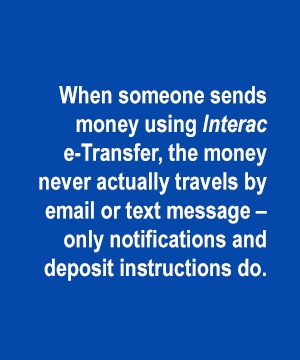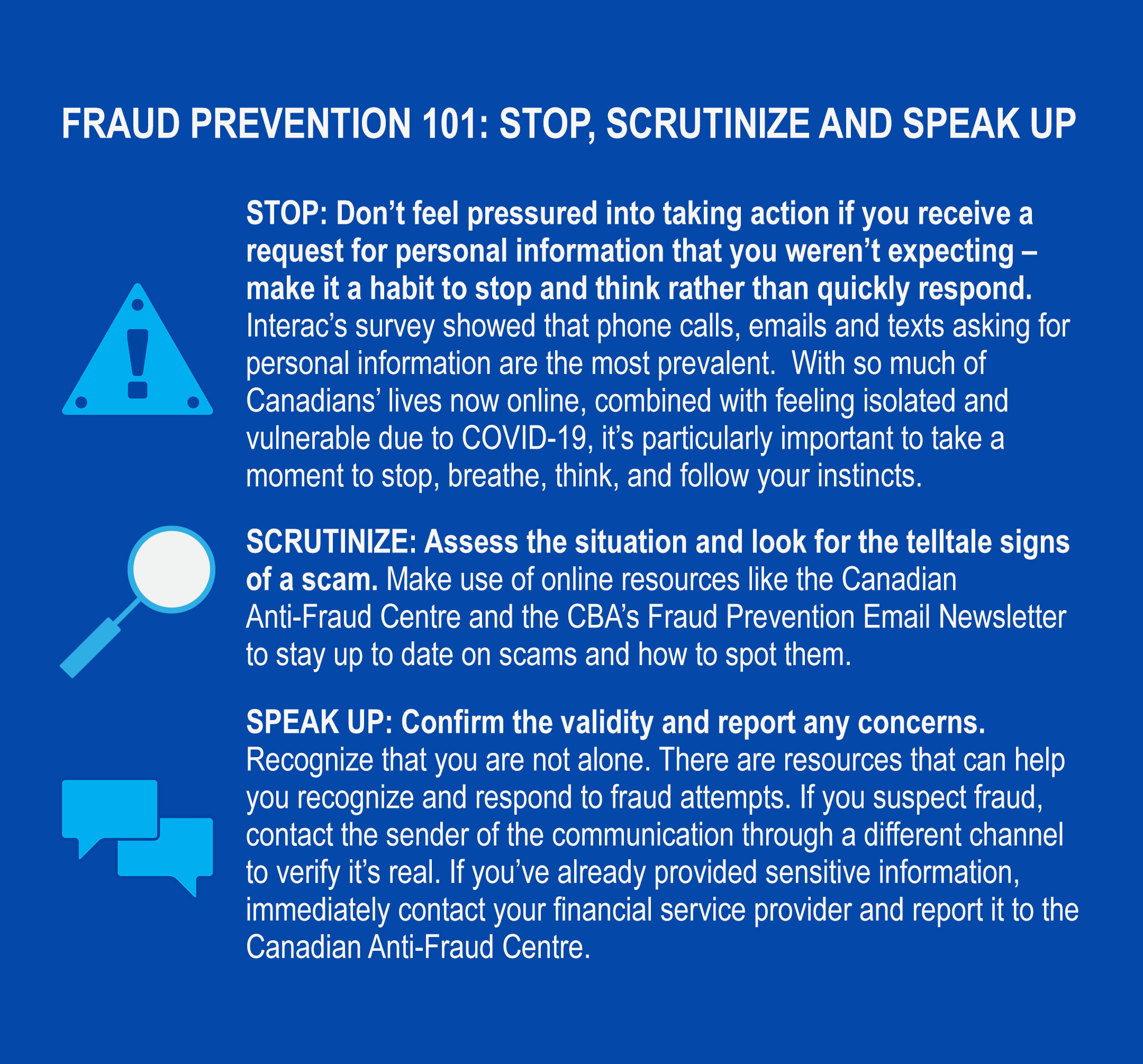Canada has firmly entered the digital era and its people and businesses have embraced convenience through technology. Digital adoption in our country is among the highest in the world and each day Canadians rely on technology‑enabled devices and services to facilitate all aspects of their lives, from staying connected with friends and family to e‑commerce and online banking.
The digitalization of our personal and professional lives has accelerated and the shift to digital platforms has intensified as the coronavirus pandemic changes the way we work, shop and socialize. This shift has affected many sectors of the economy, although perhaps most acutely the world of payments. That is, the way Canadian consumers and businesses pay for goods and services and transfer financial assets.
In today’s digitally connected world, however, trust is at the centre of all innovation. Trust underpins and guides the relationship between financial institutions and their customers, including the way they transact. At a time where financial fraud is increasing, financial institutions and their customers each have a part to play to ensure those transactions are safe and secure.
The ascent of digital payments
While cash still holds a place in society, Canadians are eager adopters of digital payment options. The majority of Canadians now use digital channels to conduct their banking, and the fastest‑growing transaction methods today are all cashless and tech‑enabled.i It’s no stretch to say that new technologies and payments innovation have revolutionized the way Canadian consumers and businesses move money around.
According to the latest available trends data from Payments Canada, electronic payments represented around 77 per cent of total payments volume and 62 per cent of total payments value in 2019.ii The data also shows that online money transfers in Canada, dominated by Interac e‑Transfer® transactions, represented 11 per cent of total electronic payments. These trends have picked up during the pandemic.
Canadians across demographic groups are poised to increase their use of digital payment channels and peer‑to‑peer transactions in the years ahead, fuelled by an especially strong uptake by Millennials and Gen Z, two of the largest generational groups in Canada. We expect to see a continued shift away from cheques and cash as Canadians increasingly demonstrate a preference for faster, easier and more secure payment experiences.
Interac e‑Transfer: a pioneering Canadian innovation
Canada has an impressive array of emerging companies that are active in payments technology, with Interac Corp. (Interac) being a prime example of a homegrown innovation leader that pushes the boundaries of what’s possible in payments. Interac was a pioneer in online peer‑to‑peer (P2P) transactions with the introduction of the Interac e‑Transfer platform in 2003, which has since grown to be an essential and ubiquitous service in Canada.
 The Interac e-Transfer service is a leading payment method and is connected to nearly every bank account in Canada through almost 300 financial institutions. In 2020, consumers and businesses made 764 million e‑transfer transactions via Interac, and those payments are expected to top one billion this year. It’s one of the safest and fastest ways to send, request and receive money to anyone with an email address or mobile phone number and a Canadian bank account.
The Interac e-Transfer service is a leading payment method and is connected to nearly every bank account in Canada through almost 300 financial institutions. In 2020, consumers and businesses made 764 million e‑transfer transactions via Interac, and those payments are expected to top one billion this year. It’s one of the safest and fastest ways to send, request and receive money to anyone with an email address or mobile phone number and a Canadian bank account.
Interac e‑Transfer is now a core part of how Canadians transact daily. In fact, the digital transaction service has become such a key payment method that the Bank of Canada designated Interac e-Transfer as a Prominent Payment System in August 2020. Interac was also selected to build the exchange infrastructure that will allow payments to be sent over a new Real-Time Rail, which is a payments system that can be accessed any time by financial institutions to process instant payments. These moves highlight the importance of digital payments to people and businesses.
While originally developed as a P2P network for consumers, continued enhancements of the e‑Transfer service have also opened new use‑cases for small businesses. Building atop a strong foundation and an already widespread adoption of the platform, Interac e‑Transfer for Business will be rolled out in 2021, featuring new enhanced features designed for business. Some banks have already enabled this new service and more will be launching it this year to help their small business customers make faster, data‑rich and secure payments in real time, all while minimizing the risk of fraud and streamlining their accounting processes.
Safety and soundness of the system
The Interac e‑Transfer service is protected with multiple layers of security, making it one of the most secure money transfer services globally. There is an added layer of security because customers also need to log in to their online banking account first before sending an Interac e‑Transfer transaction. Moreover, Interac’s Autodeposit feature strengthens the security chain by allowing customers to pre-authenticate the relationship between sender and recipient of the transaction, thereby eliminating the need for a security question and answer altogether.
However, fraud is an ever‑present risk in the digital era. It can happen to anyone, anywhere and at any time, and doubly so during the pandemic as fraudsters move online in greater measure. According to a recent poll conducted by Interac, close to six in 10 (57 per cent) Canadians have seen fraud attempts increase since the start of the pandemic. And the Canadian Anti‑Fraud Centre reported that Canadians lost more than $106 million to various frauds in 2020 and $10 million in the first 30 days of 2021, a 42 per cent increase over the same period last year.
In the majority of online fraud cases, criminals seek to exploit the weaknesses in someone’s online security practices or by tricking them into giving up personal information through social engineering techniques. That’s why it’s crucial that Canadians practice effective cyber hygiene, starting with strong password protections on their sensitive accounts, such as their email accounts.
The risk of fraud on the Interac e‑Transfer system is exceptionally low – with 2020 marking the lowest fraud levels on the service since 2013 – but it can be vulnerable to end‑point risk related to so-called "email compromise fraud". An email compromise occurs when a malicious individual gains unauthorized access to an email account. Stolen credentials are used to sign into an email account to gain access to its inbox, which can include Interac e‑Transfer notifications. This individual can use the link in the notification to access the Interac e‑Transfer gateway page and redirect the funds to deposit them into a different account.
 It’s important to emphasize that when someone sends money using Interac e‑Transfer, the money never actually travels by email or text message – only notifications and deposit instructions do. The sender’s and receiver’s financial institutions transfer the funds using established and secure banking procedures. In the instance where a transfer is deposited by an unintended recipient, this is usually the result of a compromised email or device and customers should notify their bank immediately.
It’s important to emphasize that when someone sends money using Interac e‑Transfer, the money never actually travels by email or text message – only notifications and deposit instructions do. The sender’s and receiver’s financial institutions transfer the funds using established and secure banking procedures. In the instance where a transfer is deposited by an unintended recipient, this is usually the result of a compromised email or device and customers should notify their bank immediately.
Financial institutions and Interac go to great lengths to keep Canadians' money safe and protect their personal and financial information, but the realities of a connected world mean that cyber threats are not limited to our systems and technology. Security is a shared responsibility and Canadians have a role to play. To that end, the financial services sector is committed to promoting cyber security best practices to help customers better protect themselves against scams.
How to transfer money securely via Interac e‑Transfer?
- Transfer only with those you know. Send e‑Transfers only to people or businesses you trust. Be cautious if the transfer is unexpected or if it comes from someone you don’t know, or you aren’t owed any money.
- Enroll for Autodeposit. Help guard against email fraud by signing up for Autodeposit, that way money is deposited automatically into your account.
- Don’t send the security question and answer via email. When sending money to someone who hasn’t set up Autodeposit, create a strong security question or passphrase that only the recipient would know.
- Use a secure Internet connection. Don’t use free public Wi‑Fi to transfer funds. If you’re banking on the go, use your cellular data instead.
- Practice good "cyber hygiene" measures. Start with the CBA’s cyber security toolkits for consumers and businesses, created in collaboration with the Government of Canada’s Get Cyber Safe campaign. And be careful about the personal information you share online. You may want to consider using multi-factor authentication for your email and bank accounts.
- Regularly monitor your bank accounts and statements for any unauthorized payments. Consider this a crucial step in your overall cyber security hygiene checklist.

Fraud Prevention 101: Stop, Scrutinize and Speak Up
STOP: Don’t feel pressured into taking action if you receive a request for personal information that you weren’t expecting – make it a habit to stop and think rather than quickly respond. Interac's survey showed that phone calls, emails and texts asking for personal information are the most prevalent. With so much of Canadians’ lives now online, combined with feeling isolated and vulnerable due to COVID-19, it’s particularly important to take a moment to stop, breathe, think, and follow your instincts.
SCRUTINIZE: Assess the situation and look for the telltale signs of a scam. Make use of online resources like the Canadian Anti-Fraud Centre and the CBA’s Fraud Prevention Email Newsletter to stay up to date on scams and how to spot them.
SPEAK UP: Confirm the validity and report any concerns. Recognize that you are not alone. There are resources that can help you recognize and respond to fraud attempts. If you suspect fraud, contact the sender of the communication through a different channel to verify it’s real. If you’ve already provided sensitive information, immediately contact your financial service provider and report it to the Canadian Anti-Fraud Centre.
TM Interac is a registered trade-mark of Interac Corp.
i Canadian Bankers Association, How Canadians Bank, 2019.
ii Payments Canada, Canadian Payments: Methods and Trends, 2020.